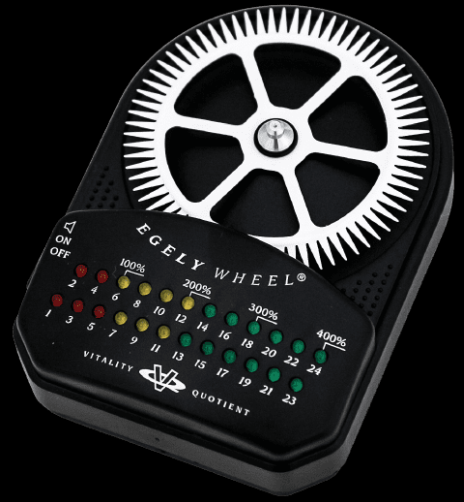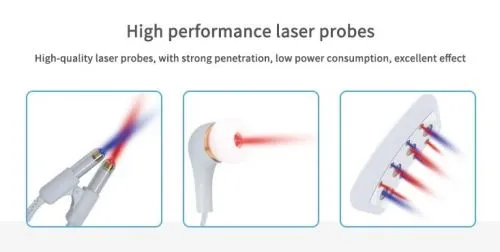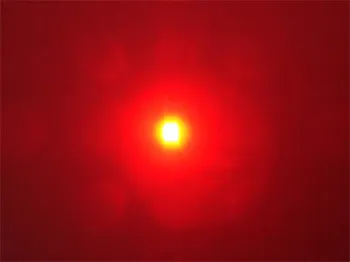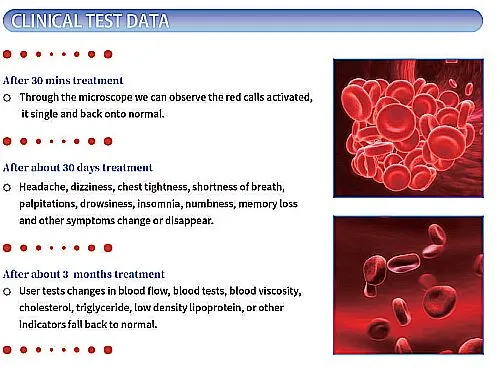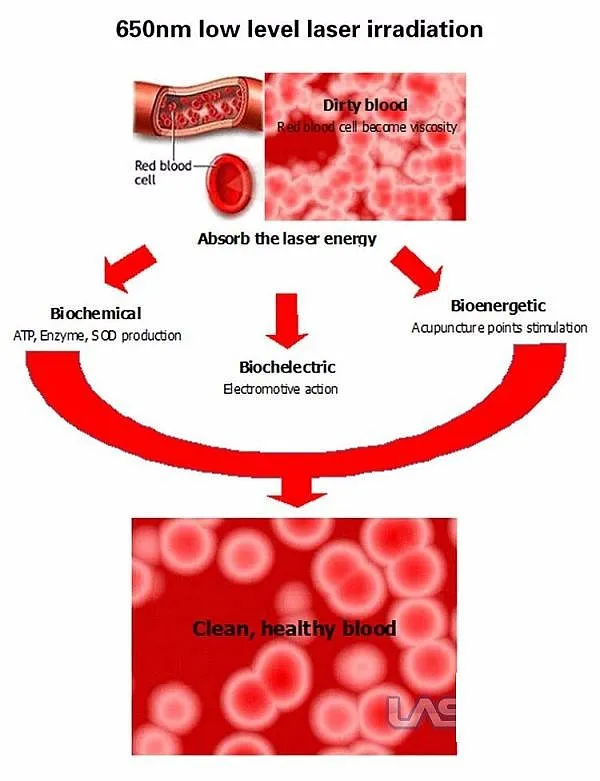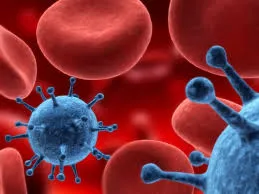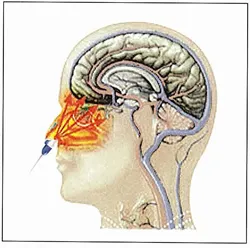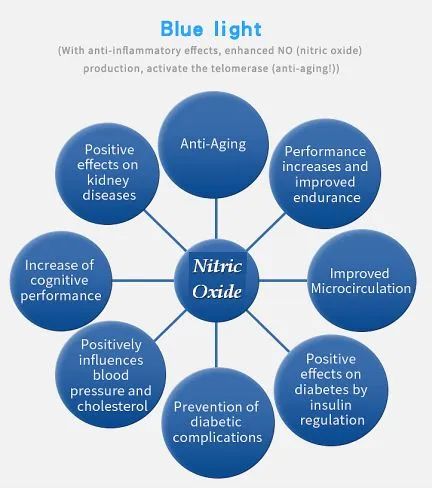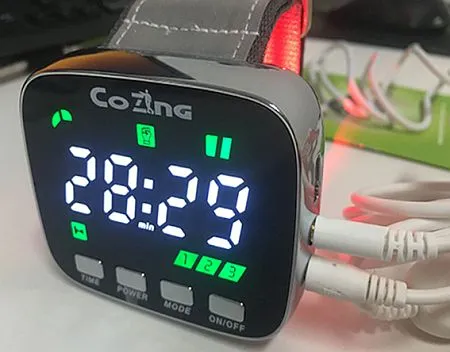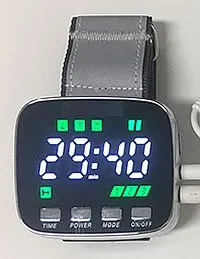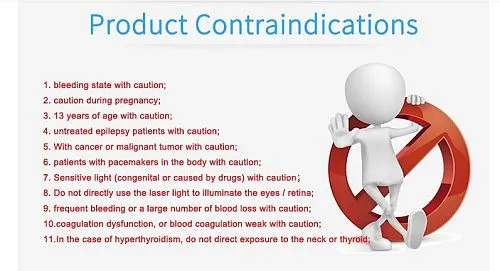Four Color 10 Beam 3-in-1 Wrist LaserNZ$279.95Approx USD$161.44
In another biophysics breakthrough, new research indicates that pulses of visible light from a laser can be used to destroy viruses in biological samples, such as blood. According to reports, the visible light is actually more effective at disrupting the virus' structure than traditional eradication methods, such as UV or microwave irradiation. Those other forms can also trigger mutations within the viruses, perhaps generating resistances.
Laser Blasts Viruses In Blood
Johns Hopkins University student Shaw-Wei David Tsen says it was during a stroll in the park with his father that the idea was born. Tsen, an immunology researcher in the laboratory of T.C. Wu at Hopkins’ Kimmel Cancer Center, sought a new method to rid isolated blood of dangerous pathogens, including the viruses HIV and hepatitis C. He says current techniques using UV irradiation and radioisotopes can leave a trail of mutated or damaged blood components. Figure 1. Demonstration of how a M13 bacteriophage is inactivated by a USP laser. (A) The laser interacts with the viral particle. (B) The laser excites the virus' protein shell by ISRS. (C) When the excitation's amplitude is large enough, the protein shell breaks apart, inactivating the viral particle (Royal Rife did similar with frequencies) Click on picture for more explanation
Using ultrasonic vibrations to destroy viruses was one possibility, but his father, Kong-Thon Tsen, a laser expert at Arizona State University, had a better idea: Lasers, unlike ultrasound, can penetrate energy-absorbing water surrounding the viruses and directly vibrate the pathogen itself.
The researchers aimed a low-power laser with a pulse lasting 100 femtoseconds (10-13 second) into glass tubes containing saline-diluted viruses that infect bacteria, also known as bacteriophages. The amount of infectious virus within each cube plummeted 100- to 1000-fold after the laser treatment. “I had to repeat the experiment several times to convince myself that the laser worked this well,” says the younger Tsen. His laser is different from those emitting a continuous beam of visible light. “Our laser repeatedly sends a rapid pulse of light and then relaxes, allowing the solution surrounding the virus to cool off,” Tsen says. “This significantly reduces heat damage to normal blood components.”
Building on the idea that vibration wrecks a virus’ outer shell, the scientists found that their low-power laser selectively destroys viruses and spares normal human cells around them, while stronger beams kill almost everything. Father and son speculate that laser vibrations could destroy drug-resistant and -sensitive viruses alike. Wu says that the technique his student developed “could potentially be used to control communicable diseases by giving infusions of laser-treated blood products.” The scientists published their results in the July 13 issue of the Journal of Physics: Condensed Matter. They will continue their studies using different viruses. Says Wu, “We believe this work on bacterial viruses is promising, but the real test will be with more serious pathogens like HIV and hepatitis.”
The National Science Foundation funded the research. Additional collaborators include Chih-Long Chang and Chien-Fu Hung from Johns Hopkins and Juliann G. Kiang from the Uniformed Services University of the Health Sciences.
Semiconductor Laser Tharpy treats HIV/AIDS
Laser semiconductor laser therapy of the blood – works on the principle of normalisation of blood conditions and immunity, increasing this way the resistance of live tissues to bacteria, viruses and infections. It leads to the incerase of quality of life and to the treatment or suppression of primary disease or accompanying complications.
The study of Mr. Sizov and Maslov /1999/ studied the effectiveness of laser therapy in HIV/AIDS treatment. They have irradiated the blood, bone marrow and immuno-competent zones of human body. The conditions of patients improved already after one application of laser therapy. The normalization of blood was proven and the immunity improvement. Bz the majority of patients the disease did not proceed to the heaviest stage during and after the treatment http://www.milta.kiev.ua/pubs/BOOK2/g23.html On the basis of these results, positive effect of laser on the blood and immunity can be expected in most cases diagnosed with HIV/AIDS.
Clinical studies carried out in Russia on HIV/AIDS ???/???? show that the complex laser effect is efficient and brings results. It leads to effective normalization /modulation/ of blood. It also leads to the improvement of general patients´ conditions of patients, lifesaving and improvement of quality of life through elimination of AIDS related illnesses. Monitoring shows that positive results of treatment persist for a relatively long time, i.e. 6 to 12 months after last treatment.
Nasal and Blood Laser enables a day-to-day blood irradiation and this causes that the effect lasts for a long time. It enables also surface irradiation of biologically active points. Several sources find such combined therapy to be effective and efficient. However, crucial is the blood irradiation through nasal cavity with the complex curative effect on the whole human body. In the case of HIV diagnosis, some resources list regions/points such as: veins in the region of elbow, region of projection of thymus, projection of liver from the front, projection of spleen from the front, armpit and vertebra and other imunity related points. Ing. František Kokoš, Yalong Trade s.r.o.
Blood can be irradiated by either the intravenal, the skin or the intranasal method, with the lattermost one becoming the most spread these days. The intravenal method is the most widely described one, since there exist hundreds medical studies about it and it has been used in Russia for 20 years and in Germany and other countries of western Europe for over 10 years. The intranasal method has been applied for 10 years and its mechanisms are the same. Nasal blood irradiation, however, also stimulates Your meridians, since the laser light works as a needle in acupuncture, i.e. it stimulates the acupuncture points within the nose.
The first doctors to use the internal blood irradiation method were cardiosurgeons E.N. Meshalkiny and V.S. Sergievski (1981), followed by gradual applications of the method in stomatology, endocrinology, urology, cardiology, surgery and neurosurgery, gastroenterology, oncology, lung medicine and other areas of medicine. High blood pressure;
Gejnic, Moskvin, Achilov: Intravenal laser blood irradiation, which is a comprehensive source of information you won`t find anywhere else. A part of it is published on Russian servers. We have acquired information from many sources from this article. We focus Your attention to S.V.Moskvin, a significant specialist in this field and the author of the article published on the Medprosvet website. The universality of low-energy laser irradiation`s biological effectiveness, and particularly the method of blood irradiation, is conditioned by the influence on regulation and homeostasis support on the lower cellular and subcellular levels. However, the irradiation also corrects physiological reactions on higher levels. The pathological focal points of these processes are the first places in which people notice an improvement, but enhancements of rheological blood properties and microcirculation help to spread the improvements into all organs. This is why it works with so many diseases.
Only a very small amount of energy enters into the organism, only about 9Joule / 5mW during 30min. (or 1 800 sec.). Part of it leaves the body immediately. Just for illustration, a daily dose of consumed food brings more than a million times greater amount of energy into our body. The laser light energy is absolutely clean, it is not affected by digestive processes and is totally without harmful constituents. It is much cleaner than what we breathe, eat or drink. This energy helps the state of the human organism to normalize. Laser blood irradiation has normalizing and regulative effects – it uses the organism`s regulatory mechanisms to either stimulate or hinder certain activities when necessary. The answer therefore is – it is definitely not harmful. The effect is only and purely a normalizing one, working on a scale allowed by the particular body. Four Color 10 Beam 3 in 1 Wrist Laser
Laser blood irradiation triggers changes in blood production elements, changing the properties of blood itself (blood plasma composition, rheological properties etc.) which leads to reactions on the level of whole organs and tissues.
When suffering from a disease, blood properties become particularly significant. Only pathological affection (infection, influence of various substances) on blood itself exposes it to changes. Biochemical changes that our blood experiences during lifetime are a reflection of emerging damage to our organism. Our organs are connected to each other by blood vessels and blood. Our blood is therefore a kind of reporter of everything that takes place in our body. One of the first things low-level laser blood irradiation triggers is the activation of microcirculation. It works on the tissue level, its performance is universal for all organs, where it helps with restructuring by means of intensifying certain functions of cell parts. Four Color 10 Beam 3 in 1Wrist Laser
Improvements in microcirculation and supplying of various tissues with oxygen by means of ILBI (Intranasal Laser Blood Irradiation) are closely connected to the positive effects of low-level laser blood irradiation on the exchange of substances, because it also increases the oxygenation of energy materials – glucose, piruvat, lactose. [Skulchenko V.V., 1991]. Blood Laser Therapy for the heart and Circulation Four Color 10 Beam 3 in 1Wrist Laser
Red Laser Activate
Metabolism: Lower Blood Pressure and Improve Blood Flow Effects of Green Light and Yellow Light Green light binds to hemoglobin, the ferrous blood compound in the red blood cells. It improves the function, behavior and cell elasticity of those cells as well as the oxygen supply.other effects: improved oxygen affinity, decreases in lactic acid, reduced blood viscosity, improved blood flow, activation of reparative, Effects of Blue light Blue light stimulates the first complex of the respiratory chain (NADH dehydrogenase). Effects: anti-inflammatory, enhances NO production, activates telomerase (Anti-Aging!) By increasing the activity of fibroblasts blue light optimizes wound healing and improves the oxygen utilization in the tissue.
Conclusions: In summary, more than 25 years of experience of using laser energy at 630-640 nm has shown that this waveband directly influences the parameters of all cells in the blood, blood plasma, the coagulation process and all the structural components of the vascular wall. Additionally, ILBI directly or indirectly affects the cells of the immune system, hormones, and exchange processes in an organism, thereby not only improving the function of the vascular system, but also the other systems of an organism. It can finally lead to lower the incidence and number of vascular diseases, and indirectly to the reduction of the number of diseases in other organs and even systemically, thus helping to prolong the lifespan. Source
Standard fda required warning
Sadly The web page authors after 39 years of working with
alternative health in our Free alternative clinic,are not
allowed to endorse the accuracy or reliability of any of
the information, content or guidelines (collectively, the "Materials")
contained on, distributed through, or linked, downloaded
or accessed from these links. You hereby acknowledge that
any reliance upon any Materials shall be at your sole risk. Caution Those of You interested in the matter of laser blood irradiation are welcome to check out the following links that will help you learn more. For specialists, we recommend the book written by Gejnic, Moskvin, Achilov: Intravenal laser blood irradiation, which is a comprehensive source of information you won`t find anywhere else. A part of it is published on Russian servers. We have acquired information from many sources from this article. We focus Your attention to S.V.Moskvin, a significant specialist in this field and the author of the article published on the Medprosvet website. You can find more information on the websites below. Similar Articles for PMID: 25941421 |
Your IP Address is: 18.222.124.172
Copyright © 2025 Altered States. Powered by Zen Cart

